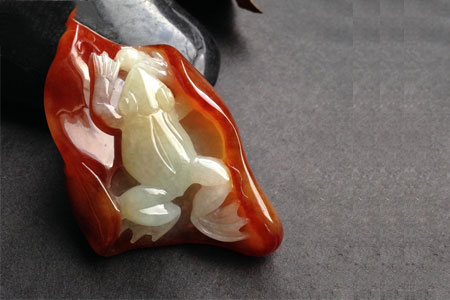The Chinese nation is a jade-loving nation with a unique jade culture in the world. Since ancient times, people have regarded jade as a sacred object that absorbs the atmosphere of the heavens and the earth and condenses the essence of the sun and the moon. It is considered to be a medium for the exchange of heaven and humans. Wearing jade-carved ornaments can ward off evil and sorrow for a lifetime. Today, China Jewelry Merchants Network Xiaobian mainly talks with you about the development and changes of jade carving from ancient times to the present.

In the belief of the primitive people, the totem is the symbol and symbol of its relatives, ancestors, and protectors. The ancestors carved patterns of birds, animals and plants on the jade, and wore them on the body to seek the protection and blessing of the gods. Among the burial objects of the tombs of the dynasties unearthed today, a large number of exquisite jade ornaments and jade articles were found, indicating that the worship of jade in ancient times has run through the entire life cycle. Even if it is dead, it must be accompanied by jade.
In the middle of the Tang Dynasty, Buddhist incense was very strong, and many Buddhist themes appeared in the jade carvings. At that time, the Central Plains area had not been introduced to the jade, but some locally produced jade, Buddha statues, Guanyin and other themes were better passed down.
In the Ming and Qing Dynasties, Jade began to flow into the Central Plains. However, the theme of the Qing Dynasty jade carving was still promoting the beauty of the gods. There was basically no innovation. Together with the rarity of the jade resources, the jade in the Qing Dynasty almost became the exclusive of the royal family and the nobility. It was deeply branded with the seal of the feudal class. Most of the subjects of these jade articles are the contents of the promotion of the government, such as the Chinese three yuan, the five sons, and the officials and officials are the mainstream sculptures of the Qing Dynasty.
Due to the development of the times and technology, as well as the trend of Western learning in the art field, China's jade carvings have collided and merged with Western cultural elements. Based on the preservation of traditional styles and themes, Western fashion and modern elements have been incorporated. . Because these Western elements rewrite the reality and nature, the personality is not lost, and the sculptures are refreshing and novel.
In modern times, the development of jade carvings has appeared in the phenomenon of "the old Wang Xietang former Yan, flying into the homes of ordinary people." Emerald is no longer exclusive to the royal family's status and power, but returns to the most primitive beliefs and aesthetics. The subject matter and meaning of its engraving also exhibits diversified and diverse characteristics, representing the public's yearning for good things.
Bucket Hat,Fisherman Hat,Fisherman Cap,Custom Bucket Hats
Dongyang City Feilong Cap Co., Ltd. , https://www.zjflcaps.com
